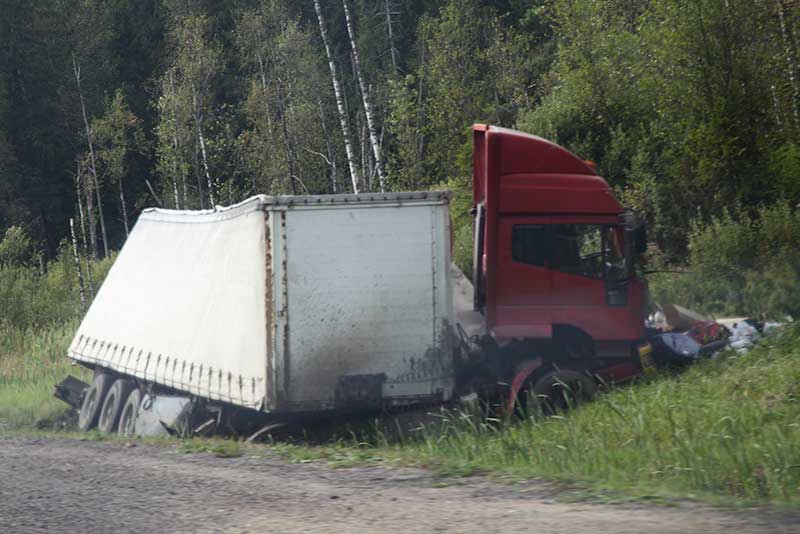FAQs—Why do most truck accidents occur?
The Federal Motor Carrier Safety Administration (FMSCA) along with the National Traffic Safety Administration (NHTSA) conducted a Large Truck Crash Causation Study. They examined the reasons underlying serious accidents for large trucks.
What is a large truck?
A large truck is a truck with a gross vehicle weight over 10,000 pounds.
How many crashes did the Large Truck Crash Causation Study examine?
The study examined a sample of 963 crashes that involved 1,123 large trucks and 959 motor vehicles (not large trucks). The crashes caused 249 fatalities and 1,654 injuries. The tractors involved in pulling a single semi-trailer were 77 percent. Large trucks carrying hazardous materials were 5 percent. The percentage or large trucks colliding with at least one other vehicle were 73 percent.
What three key variables did the study use in assessing crash risk?
- Critical event An event or action that led to an unavoidable collision. Researchers assigned the critical event to the vehicle that made the crash inevitable.
- Critical Reason. The immediate cause of the critical event. Examples include driver error, vehicle failure or environmental conditions involving weather or roadway.
- Associated factors. Persons, vehicles and environmental conditions occurring at the time of the accident.
What critical events existed related to crashes?
- Driving out of the travel lane and off the road or into another lane (32%)
- Vehicle loss of control due to traveling too fast for conditions, cargo shift, vehicle systems failure, poor road conditions and other reasons (29%)
- Colliding into the rear end of another vehicle in the truck’s travel lane (22%)
What were the main four types of critical reasons?
Driver critical reasons fell into four categories:
- Non-Performance. The driver fell asleep, was disabled by heart attack or seizure or was physically impaired for some other reason.
-
Recognition. The driver was inattentive, distracted by something inside or outside the vehicle or failed to observe the situation due to some other reason.
-
Decision. Poor decision-making occurred. Examples included driving too fast for conditions, misjudging other vehicles’ speeds or following other vehicles too closely.
- Performance. Examples include the driver panicked, over compensated or exercised poor directional control.
Were you seriously injured in a truck crash?
The Law Office of Michael R. De La Paz represents clients in cases that involve substantial injury through another party’s negligence. We represent clients throughout Texas including clients in San Antonio, Austin and other locations.
Arrange a free consultation to discuss your case.

